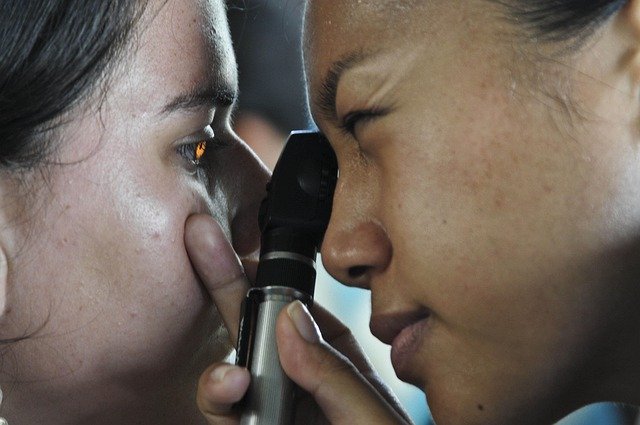Triple Negative Breast Cancer: Key Symptoms and Early Signs
Triple Negative Breast Cancer (TNBC) is an aggressive form of breast cancer that does not respond to common hormone therapies. This article explains the main symptoms and early signs, reviews treatment considerations, and highlights the importance of awareness for women’s health.

What Is Triple Negative Breast Cancer?
Triple negative breast cancer gets its name from the absence of three receptors on cancer cells that are commonly found in other types of breast cancer. These receptors—estrogen receptor (ER), progesterone receptor (PR), and human epidermal growth factor receptor 2 (HER2)—are targets for many effective breast cancer treatments. TNBC tends to be more aggressive than other types of breast cancer, growing and spreading faster. It is also more likely to recur after treatment compared to other breast cancers. This form of breast cancer is more common in women under 40, African American women, and those with the BRCA1 gene mutation.
Common Physical Symptoms of TNBC
The physical symptoms of triple negative breast cancer are often similar to those of other breast cancer types. However, due to its aggressive nature, these symptoms may develop more rapidly. The most common physical signs include a new lump or mass in the breast that feels hard, painless, and has irregular edges, though some TNBC tumors can be soft, round, and tender. Skin changes on the breast such as swelling, redness, or thickening may occur, sometimes resembling an infection. Other notable symptoms include nipple changes (inversion, discharge, or crusting), persistent pain in the breast or nipple area, and changes in breast size or shape. Some patients may notice dimpling or puckering of the breast skin, giving it an orange-peel appearance known as “peau d’orange.”
Early Warning Signs That Shouldn’t Be Ignored
Certain warning signs of triple negative breast cancer deserve immediate medical attention. Any new, persistent lump in the breast tissue or underarm area should be evaluated by a healthcare provider, even if a recent mammogram was normal. Asymmetrical changes where one breast differs significantly from the other in size, shape, or position can indicate a problem. Unexplained breast pain that doesn’t fluctuate with menstrual cycles and persists for more than a few weeks warrants investigation. Changes to the nipple, including sudden inversion or unusual discharge (especially if bloody or clear rather than milky), are concerning signs. Additionally, visible changes to the breast skin such as redness, rashes, or unusual texture changes that don’t resolve within a few days should prompt a medical consultation.
TNBC Differences From Other Breast Cancers
Triple negative breast cancer presents several key differences compared to other breast cancer types. First, TNBC typically affects younger women, with the average age of diagnosis being around 50 years, compared to 60-70 years for other breast cancers. It also has a higher prevalence among Black and Hispanic women and those with BRCA1 gene mutations. In terms of growth patterns, TNBC tends to grow more quickly and aggressively, with a higher grade (grade 3) at diagnosis, indicating less resemblance to normal breast tissue. The cancer is more likely to spread to distant organs rather than just nearby lymph nodes and has a higher recurrence rate, particularly within the first 3-5 years after diagnosis.
Diagnosis and Detection Methods for TNBC
Diagnosing triple negative breast cancer involves several steps and testing methods. The process typically begins with clinical breast exams and imaging studies such as mammograms, ultrasounds, or MRIs. If an abnormality is detected, a biopsy is performed to collect tissue samples for analysis. Triple negative status is confirmed through immunohistochemistry testing, which examines the tissue for the presence of hormone receptors and HER2 protein. Further diagnostic workup may include genetic testing, especially for BRCA mutations, which are more common in TNBC patients. Additional imaging studies like CT scans, bone scans, or PET scans might be ordered to determine if the cancer has spread beyond the breast. Early detection through routine screenings is particularly important for TNBC because of its aggressive nature and limited targeted treatment options.
Treatment Approaches for TNBC
Treatment for triple negative breast cancer typically involves a multi-modal approach. Surgery is often the first line of treatment, with options including lumpectomy (removing the tumor and some surrounding tissue) or mastectomy (removing the entire breast). Chemotherapy is a cornerstone of TNBC treatment, usually administered before surgery (neoadjuvant) to shrink the tumor or after surgery (adjuvant) to kill any remaining cancer cells. Radiation therapy may be recommended following surgery to reduce the risk of recurrence, particularly for patients who undergo lumpectomy.
Recent advancements have expanded treatment options for TNBC. Immunotherapy drugs like Tecentriq (atezolizumab) and Keytruda (pembrolizumab) can be effective for PD-L1 positive TNBC. PARP inhibitors such as olaparib and talazoparib have shown promise for TNBC patients with BRCA mutations. Clinical trials continue to investigate targeted therapies addressing specific molecular characteristics found in some TNBC tumors, offering hope for more personalized treatment approaches in the future.
This article is for informational purposes only and should not be considered medical advice. Please consult a qualified healthcare professional for personalized guidance and treatment.




